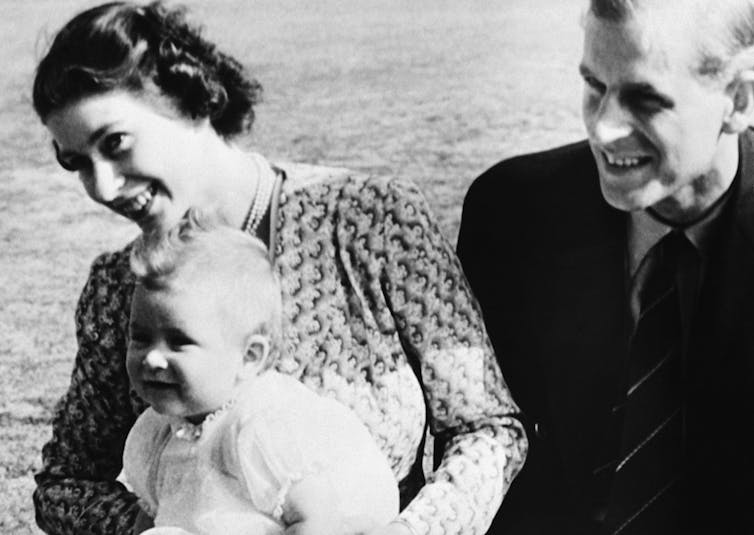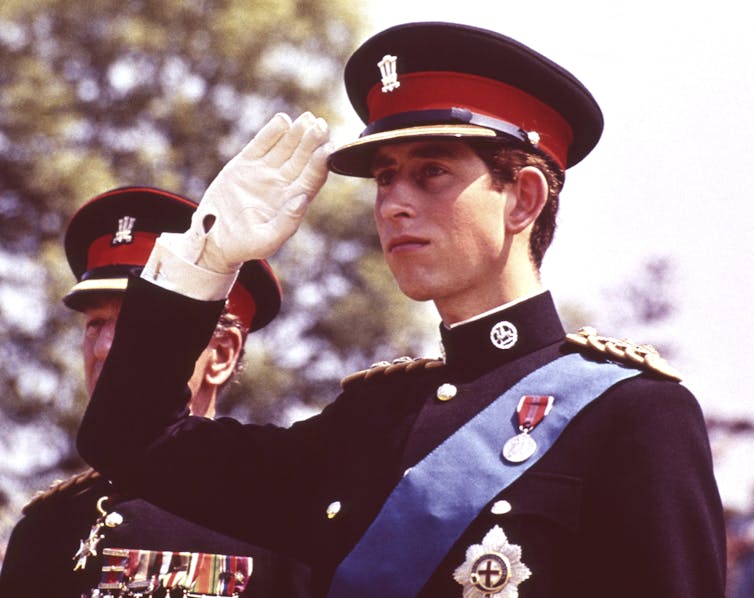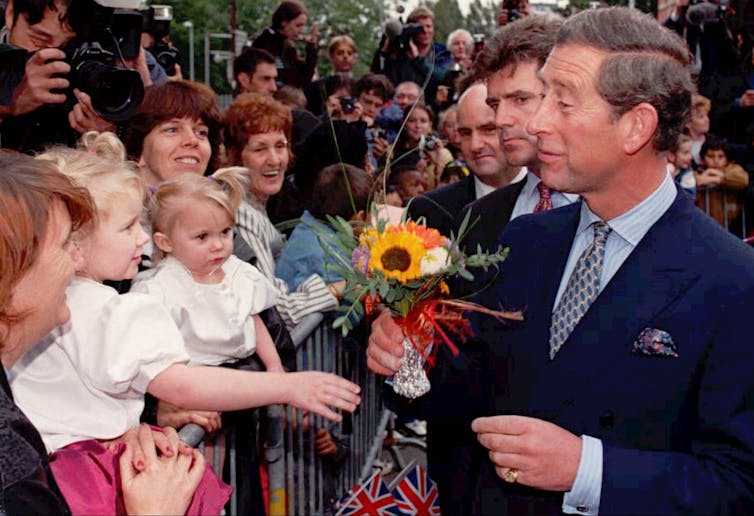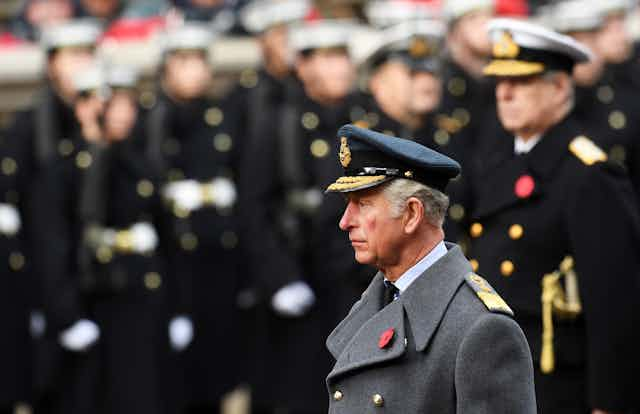Charles Philip Arthur George, Queen Elizabeth II’s eldest son, has finally ascended the throne as King Charles III.
As Prince of Wales, Charles has been there for as long as many of us can remember; every major moment in his life, from his birth through to his marriages and parenting of two sons, his public declarations about architecture, environmental sustainability and so on have been paraded before us in a regular drip feed of media coverage.
And yet, many Australians feel as if they know little about Charles the man.
Read more: Australia has a new head of state: what will Charles be like as king?
A sensitive, solemn boy
Born in 1948 to the then Duke and Duchess of Edinburgh, Charles soon emerged as a solemn, sensitive young boy; he was loved but bullied by his father and loved but kept at arm’s length by an emotionally distant mother whose first duty in life was to the Crown.

The scene of his parents’ return from a 36-day royal tour of Canada in 1951 offers a poignant snapshot of Charles’s early life as a royal prince.
Prince Philip decided Charles would benefit from going to the same schools he had himself attended, and Charles was despatched to the prep school Cheam in Hampshire, and later to Gordonstoun in Scotland. Charles hated both of them.
After graduating with a 2:2 (lower second class honours) from Cambridge (the first British royal ever to earn a university degree) and time spent in the Royal Air Force and Royal Navy between 1971 and 1976, Charles transitioned to civilian life and began to develop interests in the causes that would prove his enduring passion for the rest of his adult life: environmental sustainability, urban and rural conservation, architecture, spirituality, social reform and gardening.
He launched The Prince’s Trust and the Business in the Community (BITC) scheme and oversaw the management of the Duchy of Cornwall.

The search for an heir
Throughout the 1970s the pressure grew for Charles to find a wife and cement the line of succession. His bachelor days whizzed by with a series of relationships with beautiful women (who were almost always blondes) who each seemed to be treated to endless afternoons gazing on admiringly while Charles played polo.
But there was a problem: in 1970 Charles had already met the love of his life, Camilla Shand, who would go on to marry military veteran Andrew Parker-Bowles in 1973. The woman Charles most wanted to marry was not in the running.
An heir, however, was required, and subsequently in 1981 Charles married the young Lady Diana Spencer in one of the most famous weddings of the 20th century.
For 15 years the world looked on with fascination as the marriage produced two sons, William and Harry, before eventually ending in divorce in 1996.

One story that serves to sum up the Waleses’ marriage concerns the interior decoration of Charles and Diana’s apartments in Kensington Palace and country estate, Highgrove.
Before his wedding, Charles lived in an apartment in Buckingham Palace described by royal biographer Sally Bedell-Smith as possessing a “strong masculine flavour”. With Charles and Diana’s subsequent move to Kensington Palace:
came Diana’s pastels and chintzes to brighten the rooms made gloomy by limited sunlight […] Diana and Charles’s divergent personalities defined their respective offices. Hers, the one room where sunlight flooded through tall windows, had two pink sofas and was brimming with embroidered pillows, porcelain figures, enamel boxes, and her childhood collection of stuffed animals. Charles’s study was his man cave: small and dark, with stacks of books and papers, watercolour box, and sketch pads. From a portrait behind his desk, his mother gazed in silent judgment
Upon his separation from Diana, Charles moved his own interior designer, Robert Kime, into Highgrove and charged him with the task of expunging “all traces of Diana”.
The years after Diana’s death saw a recalibration of Charles’s public image. After a life spent in the shadows of the arc lamp of Diana’s fame and popularity, Charles brought in a public relations team to re-shape his reputation and to pave the way for Camilla’s gradual acceptance as his future Queen Consort.
Read more: 16 visits over 57 years: reflecting on Queen Elizabeth II's long relationship with Australia
A man of contradictions
The Charles who is keen to stress that he is “just an ordinary person in an extraordinary position” and someone to be “treated like any other” person, is one whose identity is nonetheless anchored in his royal heritage.
This is the schism that besets his life.
For example, it has been reported he is someone who each day has a simple light breakfast such as a boiled egg, yet given his royal status, the egg must be cooked to perfection (four minutes exactly) and his cook boils several eggs in the event the one Charles is served does not meet his standards.

He has worn the same grey double-breasted suit for years as proof of his environmental credentials, yet he’s a person for whom his clothes are laid out each morning, his toothpaste (it has been noted, perhaps erroneously) is squeezed on to his toothbrush for him. A valet carries a special cushion Charles needs to have placed on nearly every chair he sits on.
His “Farmer George” image (inherited from his ancestor George III who earned the nickname because of his love for agriculture) rests alongside the reality that the gardens he tends belong to stately homes and palaces owned or managed by his own family.
As Bedell-Smith notes, Charles’s:
cunning in extracting money from eager benefactors was perilously entwined with a weakness for the company and perks of the superrich […] he took full advantage of free yachts, flights on private jets, and estates for private vacations. From time to time his patrons turned out to be shifty, and Charles would find himself tarred by the tabloids
Charles’s many internal contradictions reflect both aspects of his character but have also been shaped by the royal system into which he has been born.
With the death of his mother, Charles is confronted with perhaps the most searing contradiction of his life: the moment he became king was one that he has waited for — often impatiently — for decades, and yet it was also the “the moment he has most been dreading” for as long as he can remember.
Read more: What are the legal and constitutional consequences for Australia of Queen Elizabeth II's death?

